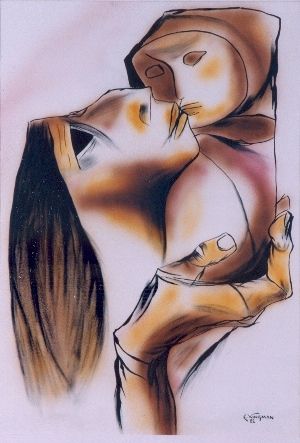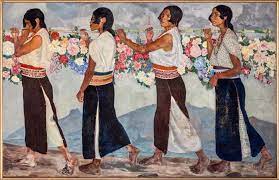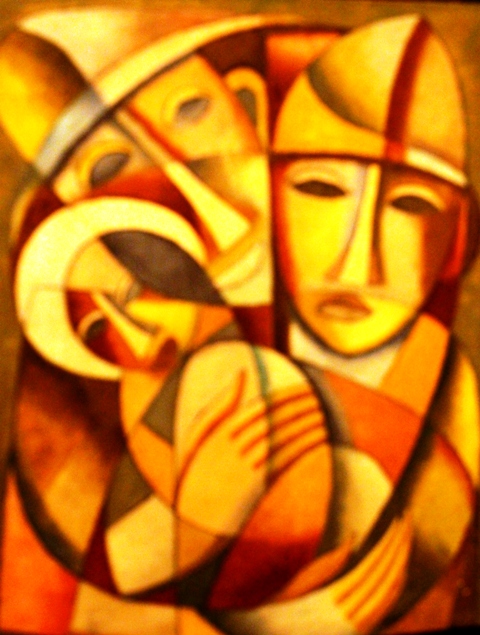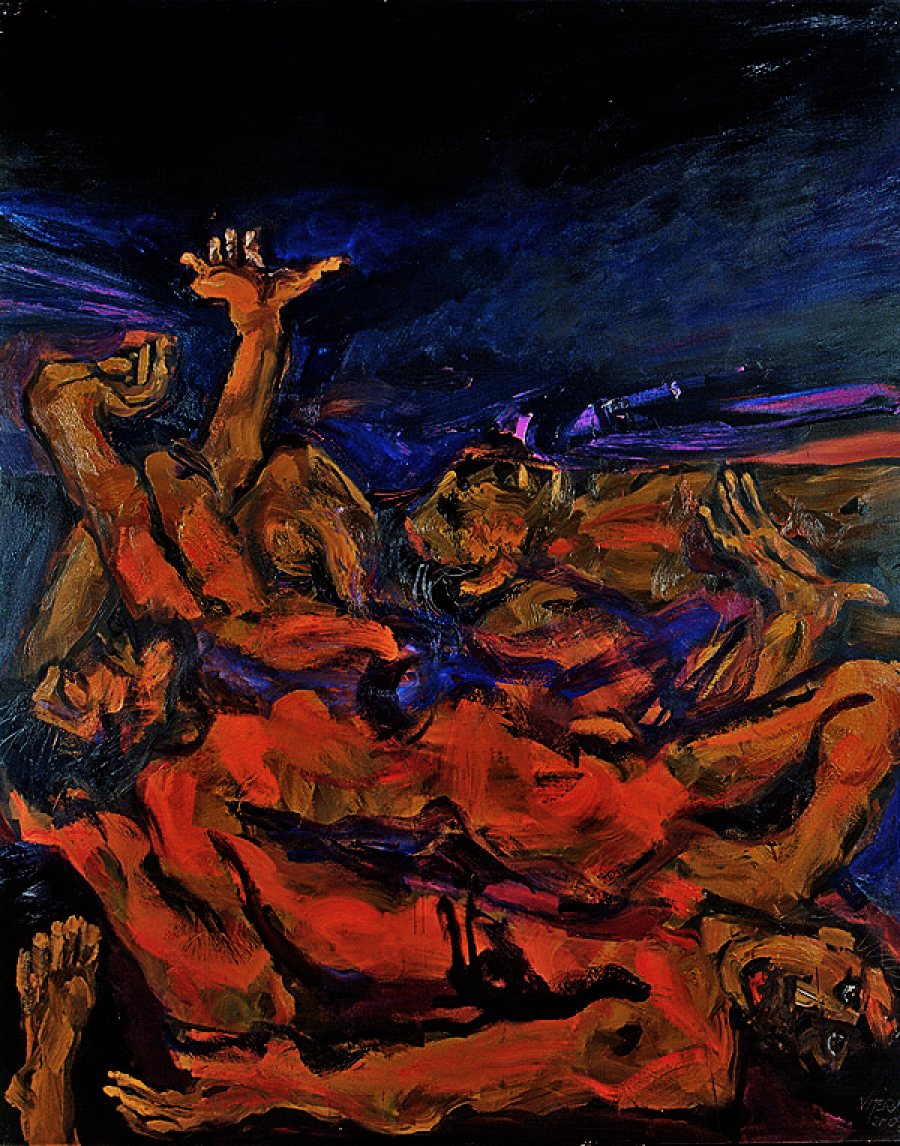Ecuador's Brush with Greatness: A Portrait of Its Finest Artists
Today, we will introduce you to some of the most famous painters of Ecuador, a country where the rich tapestry of indigenous traditions, Spanish colonial influences, and the breathtaking diversity of its landscapes have fused to create a unique cultural heritage that is vividly reflected in its art. Ecuadorian art is a vibrant celebration of life, color, and identity, embodying the spirit of its people and the complexity of its history.
Ecuador's artistic journey is marked by a profound connection to its natural beauty, from the Amazon rainforest to the Andean highlands, which has inspired generations of artists to capture the country's essence through their distinct styles and mediums. This connection is deeply rooted in the pre-Columbian era, evolving through the colonial period with the introduction of European techniques and religious themes, leading to the creation of the Quito School—an influential artistic movement that blended indigenous and Spanish elements.
In the modern era, Ecuadorian painters have continued to explore and redefine their cultural identity, drawing on their rich heritage while engaging with contemporary themes and techniques. Artists such as Oswaldo Guayasamín, who depicted the struggles and injustices faced by the indigenous peoples, and Eduardo Kingman, known for his focus on the laboring classes, have gained international recognition for their powerful and emotive works. Meanwhile, contemporary artists continue to push boundaries, exploring new forms and expressions that reflect the dynamic nature of Ecuadorian society.
Through the works of its most famous painters, Ecuador offers a window into its soul, showcasing a country that is both proud of its past and eagerly embracing the future. Join us as we explore the lives and legacies of these artists, and discover how their contributions have shaped not only the art of Ecuador but also its national identity!
1. Oswaldo Guayasamín (1919–1999)

Oswaldo Guayasamín was one of Ecuador's most prominent and influential artists, whose powerful works have left a lasting impact on the art world both within and beyond his native country. Guayasamín dedicated his life and art to highlighting the struggles, injustices, and emotions of marginalized communities across Latin America. His style evolved over his career, incorporating elements of Expressionism and Cubism, which allowed him to capture the raw emotions and turmoil that defined much of the 20th century in Latin America. His paintings often feature exaggerated, distorted forms, with a strong use of color and contrast to evoke a visceral response from the viewer. One of Guayasamín's most famous series is "La Edad de la Ira", where he explores themes of violence, oppression, and grief resulting from war, poverty, and racism. Guayasamín also embarked on significant projects that reflected his commitment to peace and humanity. The most notable is perhaps the Capilla del Hombre (Chapel of Man), a cultural complex and art museum in Quito that Guayasamín designed to celebrate Latin American culture and history while denouncing the cruelty of mankind.
2. Eduardo Kingman (1913–1997)

Eduardo Kingman «la Madre» 1982
Eduardo Kingman is one of Ecuador's most celebrated artists, renowned for his poignant portrayal of the indigenous peoples of Ecuador and their struggles. Known as "the painter of hands," Kingman's work is characterized by the expressive depiction of hands as a symbol of the suffering and toil of Ecuador's indigenous population. His art offers a powerful commentary on social injustice, capturing the resilience, dignity, and sorrow of those living on the margins of society. He studied art in both Ecuador and San Francisco, California, which helped him develop a unique style that blended elements of Social Realism with those of the indigenous art forms of the Andes. This fusion allowed him to create works that were not only visually compelling but also rich in cultural and political significance. Kingman's paintings are marked by their vivid emotional intensity and the use of strong, earthy colors that reflect the landscapes of Ecuador. His subjects are often depicted in stark, somber settings, highlighting their plight and resilience in the face of adversity. Through his art, Kingman sought to bring attention to the lives and struggles of Ecuador's indigenous peoples, advocating for social change and equality. In "Los Guandos," Eduardo Kingman masterfully uses contrast and the poignant depiction of hands to highlight the resilience and suffering of indigenous laborers, offering a powerful commentary on social injustice. Similarly, "La Madre" employs rich earth tones and expressive lines to capture the protective love and strength of an indigenous mother, reflecting the broader theme of endurance amid adversity. Both works stand as poignant symbols of the human spirit's capacity to endure and resist in the face of systemic challenges.
3. Camilo Egas (1889–1962)

Camilo Egas "Las Floristas"
Camilo Egas was an Ecuadorian painter who played a significant role in the development of 20th-century Latin American art. His work spans a variety of styles, including Expressionism, Surrealism, and Social Realism, reflecting his diverse interests and evolving perspective over time. Egas was a pioneer in incorporating indigenous themes and social issues into his art, making him a key figure in the Ecuadorian and broader Latin American art scenes. Among his renowned works, "Las Floristas" stands out, having secured the esteemed Mariano Aguilera award in 1916. Another significant piece by Egas is the portrait "Indio Mariano," which plays a crucial role in depicting indigenous people with dignity and humanity, moving beyond their conventional portrayal as mystical and historical figures in society. Egas's contribution to art extends beyond his paintings; he was also an influential educator and cultural promoter, shaping future generations of artists both in Ecuador and during his time in the United States, where he taught at the New School for Social Research in New York City. Through his work, Egas communicated a deep empathy for the human condition, a celebration of Ecuadorian culture, and a critical eye on social injustices, leaving a lasting legacy in the art world.
4. Manuel Rendón Seminario (1894–1982)

Manuel Rendón Seminario «constructivismo»
Manuel Rendón Seminario was a pivotal figure in the development of modern art in Ecuador and Latin America. Born in Paris to Ecuadorian parents, Rendón spent much of his early life in Europe, where he was exposed to and influenced by avant-garde movements such as Cubism and Futurism. This exposure played a crucial role in shaping his artistic vision, which he later brought back to Ecuador, significantly contributing to the modernist movement within the country. Rendón's work is characterized by its abstract compositions, vibrant use of color, and dynamic forms, reflecting his interest in European modernism while also incorporating elements inspired by his Ecuadorian heritage. Among Seminario's most celebrated works, "La Armonía Espacial" and "Constructivismo" stand out for their abstract brilliance and innovative compositions. "La Armonía Espacial" showcases Rendón's skill in using geometric shapes and vibrant colors to create depth and movement. "Constructivismo" highlights his adept use of constructivist principles, balancing geometric forms and color to craft a harmonious and rhythmic abstract expression. His paintings often explore the balance between abstraction and representation, suggesting rather than depicting landscapes, figures, and emotions.
5. Oswaldo Viteri (1931-2023)

Oswaldo Viteri, a distinguished name in Ecuadorian neo-figurative art, established his unique stance by seamlessly integrating elements of abstract expressionism with figurative motifs. His art delves into the heart of Ecuador and Latin America's societal and cultural issues, making him a critical voice in the art community. Renowned for merging traditional painting techniques with collage and assemblage, Viteri created richly textured, captivating works that offer commentary on themes of human nature, memory, and identity through the innovative incorporation of found objects. His tenure in Oswaldo Guayasamín's workshop and his contributions to a mural for the Ministry of Public Works, alongside his studies in anthropology and folklore, deepened his exploration of indigenous themes and cultural narratives. With the avant-garde's ideas serving as inspiration, his early artwork swiftly turned toward abstraction. In his artistic endeavors, the exhibit titled "The Disasters of the Wars" stands out, portraying the harsh realities of warfare and its aftermath. He was 15 when he witnessed an intense battle in Ambato, Ecuador, between Ecuadorian forces during the Socavon War. Although this historical event is not well remembered, it had a profound impact on him. At the exhibit, he pointed out that a study conducted at the dawn of the century by a commission of scientists revealed that out of 3000 years of civilization, there have only been thirteen days without conflict. Even today, this message is evident and pertinent. His creations undoubtedly inspire joy, kindness, and the desire to create and live in peace…
Ecuador and Beyond
Ecuador's vibrant art landscape serves as a testament to its rich cultural heritage and innovative spirit. This exploration underscores the diverse expressions and profound impact of its visual arts on the global stage. TrendGallery offers an exceptional platform for delving into the artistic achievements of talents from across the world. Take a journey with us to discover the distinct tales and styles that characterize the spirit of international art!
No Comments Yet...